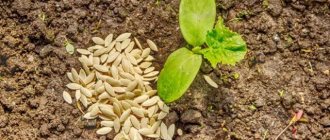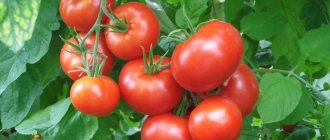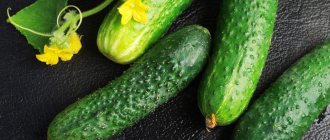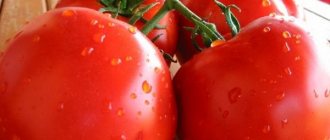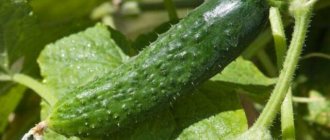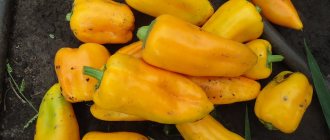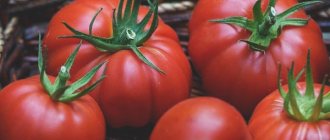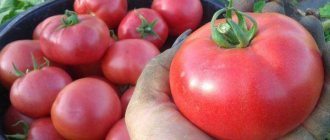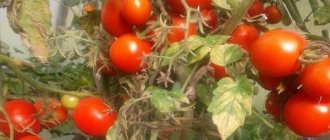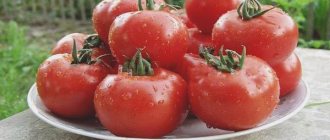- 5.1 Sowing in open ground
Cucumber Kolibri is a Russian high-yielding gherkin-type variety. It is resistant to a number of diseases and is unpretentious, so the crop can be grown in most regions. Fruits appear until the beginning of autumn, fruiting ends with the onset of the first frost.
Origin of the variety
The Hummingbird cucumber is a first generation hybrid (F1), bred on the basis of breeding and seed production. A group of researchers took part in the development of the variety: Borisov A.V., Vostrikova O.R., Skachkov V.A., Orekhova E.A. and others. Included in the register of selection achievements in 2010.
The Kolibri cucumber is approved for cultivation in most Russian regions:
- middle lane;
- Volga region;
- Northwest;
- Chernozem region;
- southern regions;
- Ural;
- Western and Eastern Siberia;
- Far East.
Recommended for growing in film shelters (without heating). In the south, the crop can be cultivated in open ground.
Agricultural technology or proper cultivation
Seed material can be sown both in open beds and in a greenhouse structure. Only germinated seeds are used for sowing. By giving preference to the seedling method, you can get an earlier harvest. They are sown and planted in greenhouses without heating in the second or third decade of May, in open beds - in early June (when grown in the middle zone).
In the south, sowing and planting are carried out in April-May. In greenhouse structures, no more than 2-3 plants are placed per 1 m2, in open beds - from 4 to 5.
Description of the variety of cucumbers Kolibri
The description of the Kolibri cucumber variety provides the following characteristics:
- indeterminate (grows throughout the season);
- flowering type: predominantly female;
- weakly branched (few shoots);
- undersized.
The stem of the plant reaches a height of 25-30 cm, spreads along the ground, and curls. The bush is characterized by bud weaving and produces many tendrils, which allows it to attach well to any support. The green mass grows quite quickly; the lateral sinuses of Hummingbird cucumbers are small.
The leaves are deep green, heart-shaped, and have five lobes. In the axil of each leaf, 4-5 ovaries appear, less often two or eight. The flowers are small, typical yellow in color. Flowering is proceeding amicably; Hummingbird cucumbers do not need pollinators. This makes it possible to grow them in closed greenhouses.
The fruits are gherkin-type, small in size (length 5-8 cm, diameter no more than 3.5 cm). The color is rich green, the average weight is 60-80 g. The pulp is juicy, crispy, and has good taste. Greens are short, fusiform, tuberculate, with white pubescence. Cucumbers are not prone to overgrowth, so the marketable yield is consistently high. The fruits are mainly used for preparations, less often - fresh.
Kolibri cucumbers are suitable for pickling and pickling
Description of fruits
The fruit has a red “cream” shape. The fruit itself is quite fleshy, with an interesting sweet and sour taste. Tomato always produces a high yield. Tomatoes are great for fresh salads, juices and canning. The fruit is quite dense, with thick walls, average weight 160 grams. Fruit diameter 30 mm. During ripening, the tomato does not contain a green spot, stem or veins inside, due to which it has excellent, delicate taste.
The ripening period is 95 days. It is considered an early ripening plant.
The fruits are characterized by good keeping quality. When preserved, due to their compactness, they do not burst. Therefore, in winter, such tomatoes can be placed on the table as a delicacy. The Hummingbird tomato can be transported over long distances without any problems.
See also
Description and characteristics of the hybrid tomato variety Yaki F1Read
The tomato is heat-loving. For cultivation, both a greenhouse, a balcony, and open ground are suitable. The main thing is to plant after the threat of frost has passed.
Characteristics of Hummingbird cucumbers
The variety is quite unpretentious. Hummingbird cucumbers grow well in a variety of soil types. Subject to proper growing conditions, they produce consistently high yields. The crop is sensitive to frost, so in most regions cultivation is allowed only indoors. Drought also has a bad effect on yields - additional watering is required in hot weather.
Productivity of Hummingbird cucumbers
The marketable yield of Kolibri cucumbers, subject to the rules of agricultural technology, reaches 11-13 kg per square meter. According to the ripening period, the variety belongs to the category of early (early ripening). The first harvest can be harvested 40 days after planting the seeds (technical ripeness), optimally after 48-50 days.
The fruiting period is long, until the onset of frost. Therefore, the harvest can be harvested even in late summer and early autumn (August, September). The fruits appear together, which makes them easier to collect.
Resistance to diseases and pests
Kolibri F1 cucumbers are resistant to a number of diseases: cladosporiosis, cucumber mosaic virus, powdery mildew.
Less resistant to downy mildew (downy mildew). May suffer from the following fungal and bacterial infections:
- white and gray rot;
- anthracnose;
- bacteriosis
Damage from aphids, nematodes, spider mites, slugs and other pests is possible. To prevent crop loss, Hummingbird cucumber plantings should be periodically inspected.
Plant characteristics
The plant itself is powerful and usually has two stems with 8-10 ovaries. Hummingbird f1 has a good immune system and is resistant to late blight. The distance between the nodes is small, and there is a knee near the stalk, making it convenient to collect ready-made vegetables. The plant is tall and therefore requires staking and pinching. The tomato, due to its power, produces large fruits. The leaves are medium in size and range from green to dark green. The leaf blade, like the stem, is characterized by its power and good growth zone. In addition, the tomato has an excellent developed root system, thanks to which it develops well and rarely gets sick.
Advantages and disadvantages
The variety is characterized by high yield and good taste of fruits. These are classic gherkins of the correct shape that can be grown in a greenhouse and even on a windowsill. There are a lot of fruits, so they are used both for personal consumption and for sale.
Hummingbird cucumbers have approximately the same size (up to 8 cm in length)
Pros:
- very high yield;
- good taste;
- early ripening (only 1.5 months);
- attractive presentation;
- long fruiting;
- can be grown in any Russian region;
- the fruits do not outgrow;
- resistance to a number of diseases;
- keeping quality and transportability.
Minuses:
- you have to constantly buy seeds;
- after pickling, cucumbers may become soft;
- frost resistance is low;
- germination is weak;
- there is no immunity to certain diseases and pests.
Features of harvesting and storage
The first fruits ripen approximately 6 weeks after emergence. At this time, the first harvest is carried out, after which the fruit is selected every 2 days. By this time, the cucumbers should have lengthened to 5–8 cm. It is best to pick the crop in the morning or evening, on a dry and sunny day.
You need to separate the ripe fruit from the stalk using a sharp kitchen or garden knife. Then the collected cucumbers need to be placed in baskets or deep containers for vegetables - they serve as temporary containers, from which the fruits are subsequently delivered to a permanent storage location. Manipulations with fruits are carried out carefully; during selection they should not be damaged, as this sharply reduces their presentation and shelf life.
Selected fruits are stored in a dry and cool place at a temperature of about +5°C for 1 month after selection. Without special conditions, the shelf life of Kolibri cucumbers is no more than 14 days, and at the same time the taste and aromatic properties of the crop gradually decrease. To preserve the harvest of cucumbers throughout the winter, it is better to pickle them.
Kolibri F1 cucumbers are a productive fruit hybrid, unpretentious and high-yielding. This variety can be successfully grown both in open soil or greenhouses, and on a windowsill. And if you take into account all the features of growing this crop, you can regularly get an excellent harvest of fresh cucumbers.
Planting Hummingbird cucumbers
The timing of sowing Hummingbird cucumber seeds depends on the growing method and the climate in the region:
- when growing seedlings, seeds are planted from early to mid-April;
- Seedlings are transferred to open ground at the age of 25 days from mid to late May;
- if you plant seeds directly in the garden, this can be done no earlier than mid-May (in the south in the last days of April, in the Urals, in Siberia - towards the end of May).
When planting seeds in a greenhouse, as well as when transferring seedlings under film, the timing is shifted a week earlier. In this case, you need to take into account the weather forecast - the seeds can be planted a little later to wait out the period of return frosts.
Attention! When growing cucumbers on a windowsill, sowing dates can be any. But in the spring-autumn period, the bushes need to be constantly illuminated with a phytolamp. The total daylight hours should be 12-14 hours.
Sowing in open ground
For outdoor cultivation, choose an open area protected from strong winds. The place is cleared in advance. The soil is dug up and fertilized with humus and compost (a bucket per 2 m2). If there is a lot of clay in the soil, you need to add sawdust or sand (1 kg for the same area).
Hummingbird cucumber seeds also need to be prepared before planting:
- hold for half an hour in a 2% solution of potassium permanganate;
- hold for 2 hours in a fungicide (“Fitosporin”, “Baksis”);
- the day before planting, soak for 7-8 hours in a growth stimulator (for example, “Agat”, “Baikal”, “Sodium Humate”).
The surface of the bed is leveled, furrows are marked at intervals of 40 cm. Holes 1-2 cm deep are formed in parallel or in a checkerboard pattern. Cucumber seeds are planted at a distance of 5-7 cm, buried and watered. After three leaves appear, the seedlings are thinned out so that there are no more than four plants per square meter.
Hummingbird cucumber seedlings are transplanted into the ground no earlier than mid-May
Attention! Planting with dry seeds should be dense, since germination is low.
Growing seedlings
Planting material for Hummingbird cucumbers is prepared in the same way as described above. The soil should be disinfected with boiling water or a solution of potassium permanganate. You can also keep it in the freezer for several days. A universal soil for seedlings is suitable for growing. The mixture can be prepared in advance independently, for example, from garden soil mixed with humus, black peat and sand in a ratio of 2:1:1:1.
Standard instructions for growing Hummingbird cucumber seedlings:
- Plant the seeds in boxes or cassettes to a depth of 2 cm, maintaining an interval of 5 cm.
- Water from a spray bottle.
- Cover with film and place in a warm place (23-26 degrees).
- After emergence of shoots, the film is removed.
- At the same moment, you can feed with a complex composition, for example, “Kemira”, “Rastvorin”, “Ideal”.
- Continue to maintain the temperature at the same level.
- Water periodically. A month after planting, they are transplanted into a greenhouse or an open garden bed.
Landing Features
This variety grows and develops well in both open and closed soil, including in garden pots. That is why the hybrid is one of the most unpretentious representatives of the genus. However, in order to obtain healthy, high-yielding plants, one must not only create the required microclimate for them, but also provide the seeds with the necessary preparation.
Did you know? Cucumbers gained particular popularity back in ancient times. This fruit is mentioned even in ancient biblical scriptures as one of the main vegetables of the Egyptian state.
Optimal sowing dates
The optimal period for sowing seeds of this variety is considered to be the second half of spring. The most suitable time lasts from the end of April to the second half of May. At an earlier time, young seedlings will not be able to receive the necessary lighting, which will subsequently lead to elongation of the bushes and brittleness of the stems.
Sowing in the first half of summer will lead to a shortening of the growing season, which will reduce the yield of the bushes significantly. When growing on a windowsill, the timing of sowing can be neglected, but for this, cucumbers must be additionally illuminated and regularly fed.
Soil selection and preparation
Cucumbers are grown on loose and nutritious soil, which is mixed from purchased soil for flower plants, compost or humus and perlite (4:1:1). As an alternative, you can use any lightweight soil for seedlings with a neutral pH value (6–7). Moreover, such a substrate must necessarily be based on peat or humus.
Before sowing, the soil must be sterilized - this makes it possible to avoid cucumbers from being affected by infections and pests.
Sterilization is carried out in any of various ways, but the following methods are most often used:
- spilling boiling water;
- roasting in the oven (+120...+130°C, about 20 minutes);
- cold storage (–20…–25°С, for 3 days);
- treatment with bactericidal agents (2% solution of potassium permanganate, copper sulfate or formaldehyde).
Parthenocarpic varieties of cucumbers also include:
Seed treatment
Before sowing, the seeds must also be sterilized - this best helps protect young plants from infectious diseases.
Different methods are also used for this. Most often, seed material is kept in the following means:
- 2% solution of potassium permanganate (20–30 minutes);
- 70% alcohol solution (5–10 minutes);
- fungicide "Fitosporin" or "Baksis" (1-2 hours).
In the presence of large-scale crops, soaking in sterilizing solutions is irrational, so it is replaced by heating. To do this, the seeds are kept in an oven or a special drying cabinet at a temperature of +40°C for 3 days. To speed up the procedure, the temperature can be increased to +80°C, while the heat treatment is carried out for about 24 hours. Immediately before planting, the seed is treated with growth stimulants. Thanks to this, not only their germination capacity increases, but also the rooting activity.
This procedure is carried out over 6–8 hours, using the following drugs:
- “Agate” (4–7 g/l);
- "Baikal" (1:1000);
- “Sodium humate” (0.3 g/l).
Important! Before processing, the seeds must be sorted. Seed material with uncharacteristic color and shape, with all kinds of traces of stains and other lesions are subject to rejection.
Landing in the ground
Planting cucumbers in open soil begins only after the onset of a full spring thaw. These are heat-loving plants, so the air temperature should rise to at least +15°C. In temperate climates, this period usually occurs in early May.
In colder climates, the best time for planting is from the end of May to the first half of June. By this moment, the seeds must be germinated, and young seedlings must have formed at least 2-3 full-fledged leaves.
Caring for Hummingbird cucumbers
Hummingbird cucumbers require some attention. They produce a good harvest only if the rules of agricultural technology are observed:
- Water regularly (twice a week), but without waterlogging. The top layer of soil should remain slightly moist.
- The first feeding is given to cucumbers two weeks after planting, then twice more every 2-3 weeks. The best option is to alternate a complex mineral composition with organic matter (mullein, droppings, humates).
- Hummingbird cucumber bushes climb well and produce a lot of tendrils, so a garter is required. To do this, install a trellis and pull the rope, and the height of the structure is small - up to 50 cm.
- Loosening and weeding are carried out regularly.
- It is advisable to mulch plantings of Hummingbird cucumbers with straw, mown grass, sawdust or pine needles.
When growing Hummingbird cucumbers, be sure to install supports for the garter.
Possible diseases and pests
Difficulties with growing the Hummingbird variety of cucumbers arise quite rarely. Usually the cause of problems is non-compliance with agricultural technology and general rules for growing crops. In this case, both dangerous fungi and all kinds of insect pests may appear in the beds.
The most common infectious diseases of the Hummingbird variety:
| Name | Fighting methods |
| Anthracnose | Sick bushes are sprayed with solutions of copper oxychloride (4 g / 1 l of water), and treatments are carried out every 10–12 days until the infection is completely eliminated. |
| Bacteriosis | The pathology can be overcome by spraying with copper oxychloride (4 g/l of water), with an interval of 10 days, until complete recovery. |
| Downy mildew | Plants are treated twice with highly active fungicidal preparations (Acrobat MC, Ridomil MC, Kurzat R) with an interval of 14 days. |
| Sulfur and white rot | Plantings are sprayed with urea solution (1 g / 1 l). It is applied to the beds once a week until the manifestations of rot are completely eliminated. |
Typical crop pests:
| Parasite name | Remedies |
| Thrips | The plantings are treated with the preparations “Aktellik”, “Confidor”, “Karate” |
| Ticks | They fight the pest by spraying with Actellik or Talstar. |
| Aphid | Treatment of plants with Confidora or Karate solution will help eliminate the pest. |
| Bedbugs | Affected plantings are treated with the insecticide “Karate” or “Confidor” |
Pests
First generation hybrids have innate immunity to most common diseases (olive spot and cucumber mosaic). However, unfavorable conditions can cause fungal infections. Preventative treatment of bushes is carried out once a season. Use mineral solutions before the formation of ovaries. The use of organic matter is allowed until the end of fruiting.
How to treat diseases:
- Powdery mildew is the most common. The reason is hypothermia of the root system, as well as an excess amount of nitrogen. As a preventative measure, treat the root system with a solution of milk, iodine and laundry soap;
- High humidity leads to peronosporosis. The disease is characterized by a brown coating on the foliage, subsequently the plant dies. Fermented milk products are used for prevention;
- Excess moisture contributes to the occurrence of gray and white rot, which damages the stem and root system.
Pests are no less dangerous. The most common ones include spider mites and slugs. In the fight against insects, do not forget about prevention, and in case of large concentrations of pests, use insecticides.
According to the description, this variety of cucumber is usually resistant to pests. But with high humidity, the root part and young shoots can be attacked by spider mites and slugs.
To prevent the influence of pests, it is necessary:
- dig up the ground in the fall, this will kill the insect larvae;
- You can scare away parasites using onions, garlic and dill; plant them between the beds of cucumbers;
- harden the seeds before sowing for seedlings.
Hybrids of the F1 series have innate immunity to many common diseases, such as olive spot and cucumber mosaic. However, under unfavorable growing conditions, cucumbers can become infected with fungus.
Treatment of bushes for preventive purposes is carried out once a season. Solutions of mineral origin are applied before the formation of ovaries. Organic matter can be used until the end of fruiting.
Treatment
Most solutions are prepared at home from available ingredients:
- Powdery mildew is considered the most common disease of cucumbers. A similar disease occurs due to hypothermia of the roots. An excess of nitrogen elements in the soil may also be the cause. Preventive measures include treating the root systems with a solution of milk, iodine and laundry soap.
- Downy mildew appears in places with high humidity. The disease affects the foliage with a brown coating and leads to the death of the plant. Fermented milk products help prevent the onset of disease.
- Gray and white rot damage the stem and roots of bushes. Excess moisture is also a cause. A urea solution helps fight infection. 10 g of the drug are diluted per 10 liters of water.
For species of hybrid origin, pests pose a greater threat than diseases. Some insects destroy the stems and roots of plants during the growing season, while others attack fruits. The most common pests are spider mites and slugs. These insects cause significant damage to the crop, destroying both the fruits and the bushes themselves.
Prevention
Pest prevention is carried out during autumn soil preparation. Before the onset of cold weather, dig up the earth without breaking large clods of earth. During frosts, weed seeds and larvae of harmful insects die.
To prevent them, moderate watering and preventive spraying with solutions of copper-containing preparations, for example, copper oxychloride, are needed. When signs of disease appear, fungicides with copper are also used, and against rot - urea and dusting the affected parts of the bush with wood ash.
Common parasites are aphids, thrips, spider mites. Insecticides are used against them: Confidor, Actellik, Karate. For preventive purposes, plantings are sprayed with a soap solution, tobacco, onion or garlic infusion.
Due to the early ripening period, the use of chemicals is not recommended.
A urea solution is effective against infection (10 grams of the drug per bucket of water).
